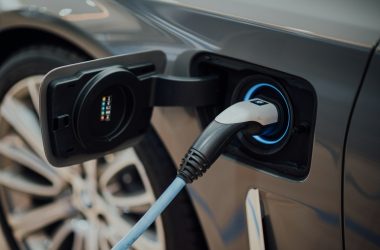Finding the right car finance deal isn’t just about the monthly payment. Behind every offer sits one key number that decides how much you’ll really end up paying overall: the often dreaded interest rate. It’s the part of the deal that can make a great car affordable or quietly push it out of reach.
Many drivers focus on the car first and the finance later, but understanding how rates work can make just as much difference as choosing the right model. Even a small change in percentage can add or save hundreds of pounds over a few years, so it’s really worth knowing how lenders decide what rate to offer you.
The good news is that getting a fair rate isn’t just luck or timing. It’s about understanding what lenders look for, knowing how the auto market works, and taking a few smart steps before you sign anything. Whether you’re applying for finance for the first time or thinking about refinancing an existing deal, let’s take a look at how to improve your chances and find the most competitive rates as we soon head into 2026.
How Do Car Finance Interest Rates Actually Work?
Before you can improve the rate you’re offered, it helps to know what actually goes into it. When you take out car finance, the interest rate is essentially the cost of borrowing the money to pay for the car. It’s how lenders make their return, but it’s also their way of managing risk. The higher the perceived risk, the higher the rate tends to be.
Most car finance agreements in the UK, whether that’s Hire Purchase (HP) or Personal Contract Purchase (PCP), are fixed-rate- meaning your payments stay the same throughout the term. What can vary is how that rate is calculated in the first place.
Lenders typically look at a few key details:
- Your credit history: shows how reliably you’ve handled borrowing in the past.
- Your income and employment stability: helps confirm that repayments will be manageable.
- The deposit you can put down: a higher deposit reduces risk for the lender.
- The car itself: newer or higher-value cars often attract lower rates, while older models can mean higher ones.
It’s also worth understanding the difference between the interest rate and the APR (Annual Percentage Rate). The interest rate shows the basic cost of borrowing, while the APR includes any extra fees or charges tied to the loan. That’s why one deal with a slightly higher interest rate can sometimes work out cheaper overall if its fees are lower.
To put it in perspective, a difference of just one or two percent might not sound like much, but on a £10,000 car over four years, it can easily mean paying several hundred pounds more (or less) by the time you reach the final payment.
How to Improve Your Chances Of Securing A Lower Rate
Once you know what affects interest rates, the next step is putting that knowledge into practice.
Don’t worry too much because the good news is that there are a few straightforward ways to strengthen your position before you apply. Small improvements now can make a noticeable difference to the offers you get.
Check your credit file early
As we touched on above, lenders do look at your credit profile. Mistakes or outdated information can drag your score down without you realising. Review your file with all three major UK credit reference agencies and correct any errors before applying.
Tidy up existing borrowing
Lenders like to see stability. Paying down smaller balances or setting up direct debits to avoid missed payments can give your profile a quick lift.
Consider a larger deposit if possible
Putting more down upfront instantly reduces the amount you need to borrow, which can help unlock lower rates.
Choose your timing carefully
Applying just after a pay rise, bonus, or job change that boosts income can make your affordability stronger.
Why Using A Broker Can Help You Find a Lower Rate
Finding the best car finance rate isn’t always about where you bank or the dealership you visit. Brokers can often open up options you wouldn’t find on your own. Instead of approaching one lender at a time, a broker works with multiple finance providers, matching you with those most likely to offer competitive rates based on your profile.
It’s also a smart way to compare deals without putting unnecessary marks on your credit report. Many brokers can run soft searches to gauge your eligibility before you make a formal application, helping you avoid repeated credit checks.
If you’re unsure where to start, it’s worth doing a bit of research first. Look for brokers with strong customer feedback on platforms like Trustpilot and always check that they’re authorised by the Financial Conduct Authority (FCA). Independent review forums such as Reddit can also be useful for seeing what real drivers have experienced.
Going directly to highly rated brokers such as ChooseMyCar can also be a good starting point if you want to explore flexible car finance options without the pressure of applying directly through a dealer.
Easy Mistakes That Could Cost You a Better Rate
Even when you’ve done the groundwork, it’s easy to overlook a few details that can make your car finance rate higher than it needs to be. Most of the time, it’s not about major financial mistakes- just small habits that can work against you without you even realising.
Not comparing enough offers.
Sticking with the first deal you’re offered, especially through a dealership, can mean missing out on better rates elsewhere. Dealers often have preferred lenders, but they might not always be the cheapest option for your situation.
Focusing only on the monthly payment
A low monthly figure might look decent, but it can mean a longer term or higher overall cost. Always check the total amount payable to see the real price of the deal.
Ignoring fees and charges
Some lenders advertise a low interest rate but add admin or option-to-purchase fees later. Comparing APRs (not just interest rates) gives a truer picture of what you’ll pay.
Leaving paperwork or proof incomplete
Missing documents or inconsistent information on an application can cause delays or reduce lender confidence (both of which can push your offered rate higher).
Waiting too long to act
If the base rate changes or your credit score dips between checking and applying, you could lose access to better deals. When you find a competitive rate that genuinely fits your budget, make sure you secure it sooner rather than later.
What 2026 Could Mean For Car Finance Rates
After a few years of ups and downs, 2026 is shaping up to be a steadier year for UK borrowers (hopefully!). With inflation slightly easing and the Bank of England expected to hold or gradually lower the base rate, there’s cautious optimism that car finance deals could start to feel more affordable again.
That doesn’t mean rates will suddenly drop across the board though unfortunately. Lenders will still be careful about risk, especially for older vehicles or applicants with limited credit history. But for well-prepared buyers who’ve taken a bit of time to build a strong application, the conditions are moving in a positive direction.
Whether you’re planning to apply now or waiting for the new year, the same principles still apply: research carefully, compare fairly, and look beyond the headline numbers. A little prep and a dose of patience can still go a long way in helping you secure a deal that genuinely works for your budget.








